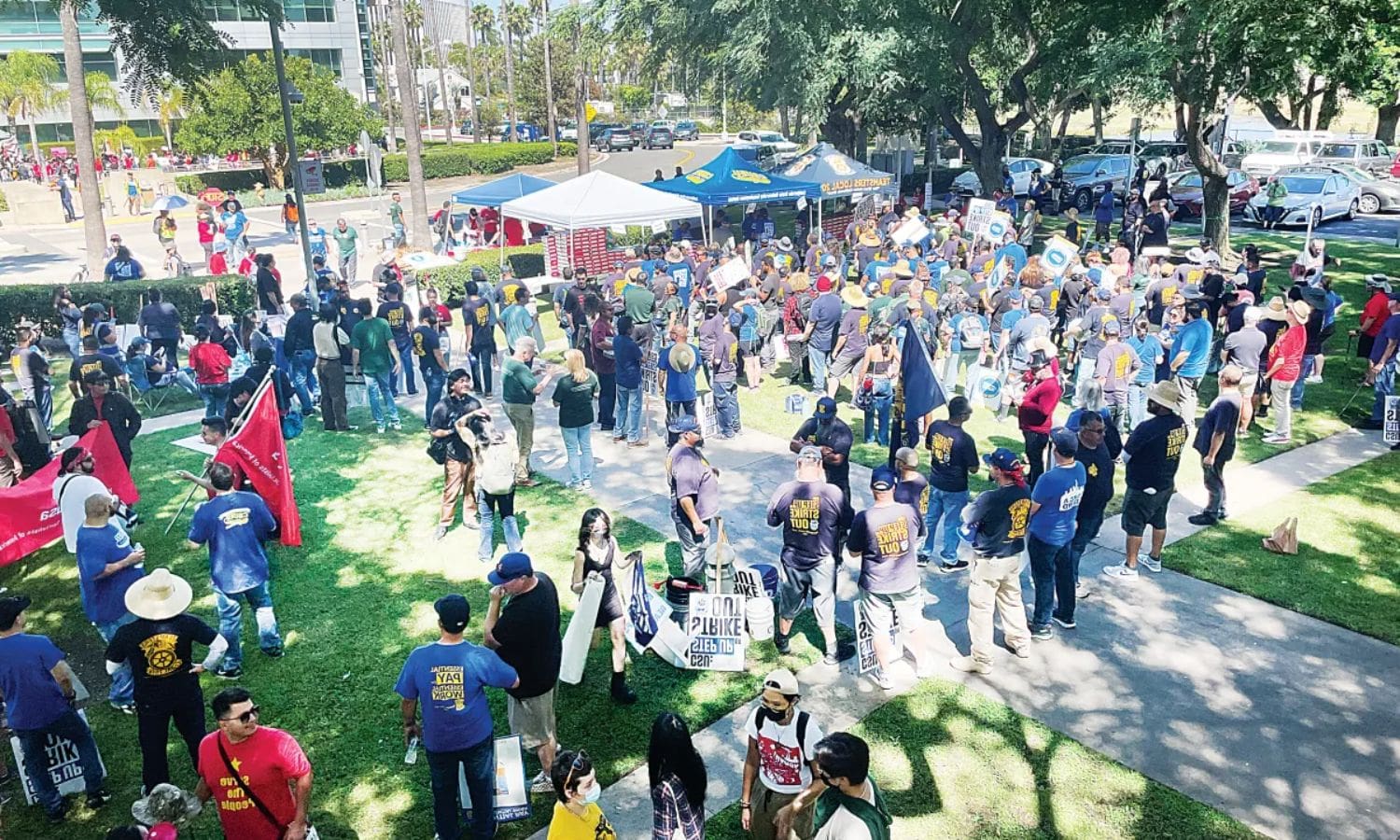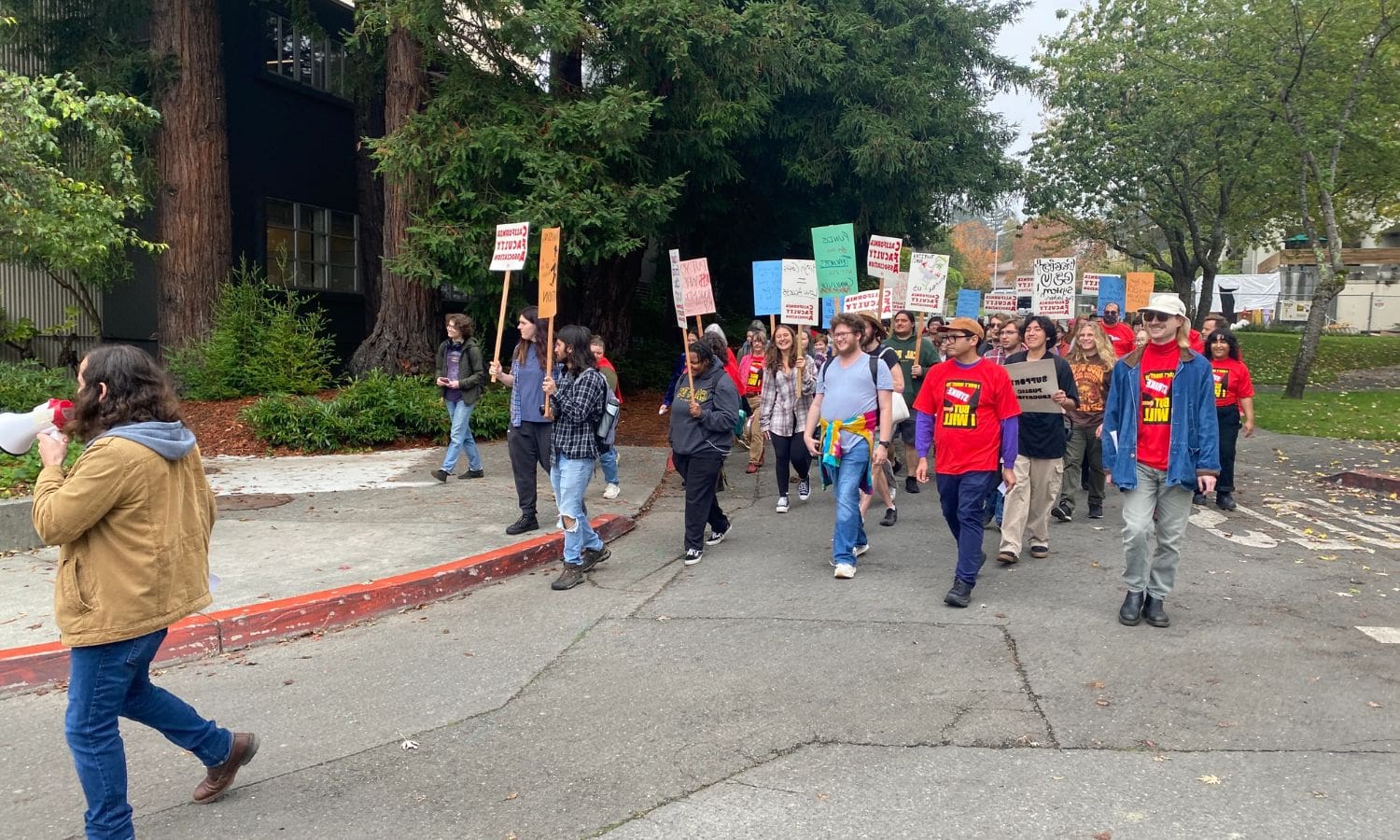CSU Faculty Strike: The California State University (CSU) system is currently facing uncertainty as the faculty union plans to go on strike, leading to potential disruptions during the start of the semester.
The breakdown in negotiations primarily revolves around compensation, with the union arguing that current offers fail to address the financial strain faced by faculty, exacerbated by tuition hikes and inflation.
This ongoing dispute raises questions about the future of negotiations and the impact it may have on the academic year.
Key Takeaways Of CSU Faculty Strike
- CSU faculty union has planned a strike from January 22-26, which will affect all 23 campuses and over 26,000 members.
- The main demands of the faculty union include better pay, improved working conditions, and addressing increased workload expectations.
- Negotiations between the faculty union and CSU administration have broken down over compensation, with the union demanding a 12% raise and the administration offering 5%.
- The financial strain faced by CSU, including a $1.5 billion shortfall and approved tuition hikes, complicates the negotiations and puts an additional burden on students and families.


CSU Faculty Union’s Planned Strike:
The California State University (CSU) faculty union’s planned strike has raised concerns about the uncertainty surrounding the start of the semester. The strike, scheduled for January 22-26, will affect all 23 campuses across the state.
The CSU faculty union, consisting of more than 26,000 members, is demanding better pay and improved working conditions. The union argues that faculty salaries have not kept pace with the rising cost of living in California, making it difficult for faculty members to make ends meet. Additionally, they claim that workload expectations have increased, leading to burnout and diminished quality of instruction.
The strike has left students and parents worried about the potential disruption to their education, as classes may be canceled or rescheduled. The CSU administration and the faculty union are currently engaged in negotiations to resolve the dispute before the strike commences.


Also Read:SB 915 Aims to Enhance Safety in AV Regulation
Negotiation Breakdown Over Compensation:
Unfortunately, the negotiations over compensation between the CSU administration and the faculty union have reached a point of breakdown. The faculty union is demanding a 12% raise this fiscal year, rejecting the CSU’s offer of a 5% raise. This has led to escalating tensions between the two parties, with no resolution in sight.
The breakdown in negotiations over compensation has significant implications for the semester start at CSU. The uncertainty surrounding faculty salaries and benefits has created a sense of unease among both faculty and students. If the negotiations remain at an impasse, it could potentially result in a faculty strike, which would further disrupt the start of the semester and have a detrimental impact on the quality of education provided to students.
Both the CSU administration and the faculty union must work towards finding a mutually agreeable solution to avoid further disruption to the academic year.
Financial Strain and Tuition Hikes:
Continuing from the previous subtopic, the financial strain faced by CSU and the approval of tuition hikes have added to the challenges in the ongoing negotiations between the CSU administration and the faculty union.
CSU is currently dealing with a $1.5 billion shortfall, which has put the university under significant financial strain. In response, the administration has approved tuition hikes, sparking opposition from the faculty union. These tuition hikes have further exacerbated the tensions between the two parties, as the faculty union argues that increased tuition puts an additional burden on students and their families.
The financial strain faced by CSU, coupled with the contentious issue of tuition hikes, has made the negotiations more complex and difficult to resolve. Both parties need to find a mutually agreeable solution that addresses the financial challenges while also considering the impact on students and faculty.
Inflation Impact on Compensation:
The impact of inflation on faculty compensation further complicates the ongoing negotiations between the CSU administration and the faculty union.
The union is seeking a 12% raise in response to rising inflation since 2021, which has eroded the purchasing power of faculty paychecks.
Inflation refers to the general increase in prices of goods and services over time, leading to a decrease in the value of money. As inflation rises, the cost of living also increases, making it more difficult for faculty members to maintain their standard of living.
Higher compensation is necessary to offset the effects of inflation and ensure that faculty members can afford their basic needs. However, this increase in compensation adds another layer of complexity to the negotiations, as the administration must balance the demands of the union with the financial constraints of the university.
Ongoing Dispute and Future Negotiations:
Amidst the ongoing dispute between the CSU administration and the faculty union, future negotiations are anticipated to address a range of contract items in June.
The breakdown in negotiations, threats of layoffs, and imposition of a final offer have strained the relationship between the two parties. The upcoming negotiations will be crucial in resolving the issues at hand and avoiding a potential faculty strike, which could disrupt the start of the semester.
It is expected that both sides will bring forward their concerns and demands, with the aim of reaching a mutually beneficial agreement. The negotiations will likely cover various aspects, including compensation, workload, job security, and benefits.
The outcome of these negotiations will have significant implications for the faculty members and the smooth functioning of the California State University system.


Conclusion Of CSU Faculty Strike
The ongoing dispute between the CSU Faculty Union and the administration over compensation has resulted in uncertainty regarding the start of the semester. The breakdown in negotiations and the financial strain on the university, leading to potential tuition hikes, have further exacerbated the situation.
The impact of inflation on compensation adds another layer of complexity to the issue. Future negotiations will be crucial in resolving this dispute and ensuring a smooth academic year for both faculty and students.
Q1. What is the most popular major in SJSU?
Ans. The frequently chosen academic disciplines at San Jose State University encompass Business, Management, Marketing, and Related Support Services; Engineering; Psychology; Communication, Journalism, and Related Programs; Social Sciences; Visual and Performing Arts; Health Professions and Related Programs; Computer and Information Sciences.
Q2. Is SJSU a big campus?
Ans.With a total undergraduate enrollment of 26,863 as of fall 2022, San Jose State University is situated in an urban setting, covering a campus size of 154 acres.
Q3. How many Indian students are at San Jose State University?
Ans. As per the analysis of student visa data for 2022, a substantial number of 213,062 Indian students chose the USA for their higher education in American colleges and universities. Among this considerable cohort, San Jose State University welcomed around 2,041 students.
Q4. What is SJSU international ranking?
Ans. In the realm of global education, San Jose State University holds the 1452nd position among the Best Global Universities. The rankings are determined based on their performance across a set of widely accepted indicators of excellence.
Our Reader’s Queries
How much does a CSU professor make?
A Professor at California State University can expect to earn an estimated total pay of $103,473 annually. This figure is the median, meaning it falls right in the middle of the salary ranges collected from our users through our Total Pay Estimate model. Rest assured that this estimate is based on reliable data and calculations.
Why is CSU on strike?
The California State University’s faculty union has declared a week-long strike across all 23 campuses from Jan. 22-26. This comes after the system’s announcement of a 5% raise for members, which falls short of the union’s expectations. The strike is a result of the union’s dissatisfaction with the proposed raise and their ongoing efforts to secure better compensation for their members.
What are the strike demands for CSU?
The California Faculty Association is advocating for a 12% increase in salaries for this fiscal year, along with additional perks such as extended parental leave and higher minimum wages for the lowest-paid employees.
How many faculty are there in the CSU system?
With a workforce of over 56,000 faculty and staff, our institution caters to every region in California, from Humboldt to San Diego. We offer a diverse range of 4,100 degree programs that are tailored to meet the demands of the workforce. Our commitment to providing quality education is unwavering, and we strive to ensure that our students are equipped with the necessary skills to succeed in their chosen fields.

